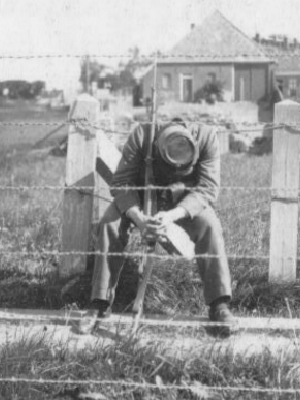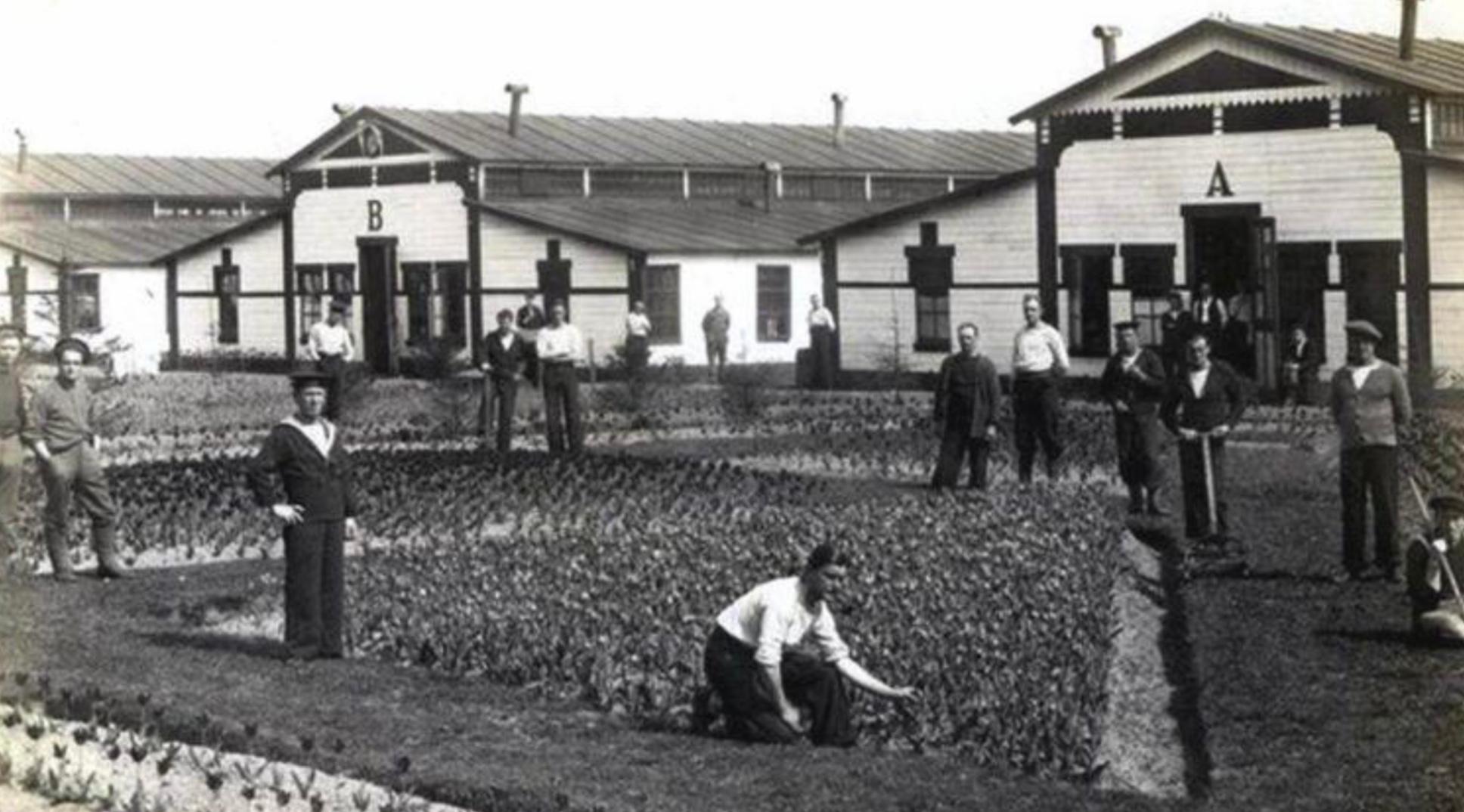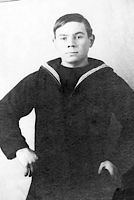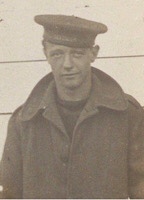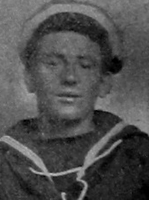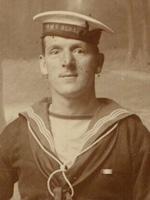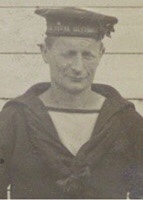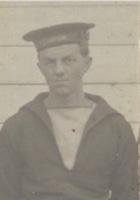Internees & POWs
| ||||||||||||||||||||||||||||||||||||||||||||||||||||||||||||
| As the 1st Brigade, plus a few stragglers from the 2nd, fell behind the Royal Naval Division's withdrawl from Antwerp, Commodore Henderson made the decision to take the brigade into neutral 'Holland' to avoid the capture of 1,500 men by the enemy. International law decreed that these men would be interned for the duration of the war. Transported to the north of the country they would be housed in wooden barracks behind Groningen's prison. The internment camp would be known by the locals as the English Camp, to the men it was HMS Timbertown. | ||||||||||||||||||||||||||||||||||||||||||||||||||||||||||||
|
The men were initially housed in army barracks whilst the officers were allowed to seek accommodation in the city itself having given their word of honour that they would not attempt to escape. The Hague Peace Conference allowed the officers home leave, this did not apply to the ranks and NCOs. In January 1915 the men were moved from the army barracks into purpose built barracks in a new camp constructed on the army base. The new camp was surrounded by a double barbed wire fence at its perimeter which was floodlit at night. The camp was self-contained with its own facilities. Besides the barracks the buildings included an administrative office, a post office / library, a sports hall, a sick bay and a large recreational hall which doubled as a church. The food offered by the Dutch authorities was not to the liking of the men and official requests were made for the food to be improved. In response the men were allocated a budget and allowed to buy and cook their own food. The day's menu consisted of breakfast (porridge with syrup, bread and butter, coffee), lunch (meat or fish, potatoes, vegetables) and supper (bread with cheese or jam, tea). As parcels started to arrive from both home and the Red Cross any shortages became more bearable. Later in the war a food shortage gripped the whole of the country. The rations of the men in the camp were reduced in line with those of the Dutch population. The daily routine for the men at the camp consisted of: 06:30 Wake up, wash, shave & breakfast 08:45 Groups allocated to the compulsory march and camp duties 12:30 Lunch 13:30 Groups allocated to work or recreation. Group allowed to Groningen's cinema 16:30 Supper followed by rostered group 'shore leave' to Groningen 22:00 All back in camp There was no compulsory march on Sundays when the men were allowed to attend church instead. | ||||||||||||||||||||||||||||||||||||||||||||||||||||||||||||
|
Boredom soon became a factor and, to maintain the morale of the men, a number of clubs and study groups were formed. The latter were not initially popular although the introduction of officially recognised qualifications saw the numbers attending classes jump. Sport in many forms was the favoured pastime within the camp. The main clubs were for athletics, tennis, rugby, cricket and boxing. The athletes amongst the men also joined the local Groningen clubs. Competitions regularly took place on the camp's sports ground with the Dutch locals attending in large numbers. The most popular sport, of course, was football. As early as 1914 The Royal Naval Brigade Football Club Association was formed to allow the men to play in their own league as they were not allowed to play in the local leagues. A Brigade team was allowed to play friendlies against local teams, the standard of the team would prove to be high. The Brigade team was also allowed to play in cup completions and would go on to draw 1-1 with Ajax of Amsterdam. |
| |||||||||||||||||||||||||||||||||||||||||||||||||||||||||||
| ||||||||||||||||||||||||||||||||||||||||||||||||||||||||||||
|
Although there were complaints that the men on shore leave in the city could become rather 'lively' with alcohol they were welcomed by the local population on the whole and would become very popular, especially with the girls. The Dutch regarded the men from the English Camp as very clean. On Sunday afternoons the camp was opened up and it would become quite the place to visit for a family outing. Friendships soon started to develop and a number of Dutch girls married English sailors. Married men were allowed to sleep outside the camp as long as they were accompanied by a guard. Various performance groups were formed in the camp ranging from comedy to opera. These would be popular not only with the men but also the local population who would attend the performances in the large recreation room. The most popular would be a cabaret group known as the Timbertown Follies. The Follies would become quite renowned and performed to large audiences in the Dutch cities. All of the proceeds were donated to charity. |
|||||||||||||||||||||||||||||||||||||||||||||||||||||||||||
| ||||||||||||||||||||||||||||||||||||||||||||||||||||||||||||
|
The men received a daily allowance in the camp equivalent to the pay of the lowest rank in the Dutch military. To supplement this (and increase the amount of alcohol they could obtain) a number of workshops were formed in the camp covering a variety of trades. These workshops ranged from tailors to electricians to a knitting group, the men of this group producing jerseys and socks for the Navy. The most well known of these trades being the woodworkers that produced picture frames and trinket boxes for sale in Selfridges. Timbertown became highly regarded for the quality of the products produced. The proceeds from these trades purchased the sports equipment for the camp. From April 1915 the men were allowed to volunteer for paid work outside the camp. The work could not be war related. The area around Groningen was experiencing a labour shortage due to the Dutch mobilisation and local factories, shipyards, small businesses and, of course, coal mines benefitted from this arrangement. The local farms were also a major employer come harvest time. |
|
|||||||||||||||||||||||||||||||||||||||||||||||||||||||||||
| ||||||||||||||||||||||||||||||||||||||||||||||||||||||||||||
|
Despite the relatively comfortable life in the camp, many of the interned men were always looking for a way back home. Officers living outside the camp had given their word of honour not to escape, fifteen were back over the North Sea before the end of the year. In 1915 the remaining officers, less Commodore Henderson, were moved to a secure fortification at Bodegraven. 1915 saw more than thirty successful escapes from the camp, the Dutch locals often being complicit. The escapees put the British Government in a difficult position with the neutral Dutch government. The issue was resolved, and the escape attempts brought to an abrupt end, when all of the escapees were returned to the camp by the British Government in 1916. |
|||||||||||||||||||||||||||||||||||||||||||||||||||||||||||
|
||||||||||||||||||||||||||||||||||||||||||||||||||||||||||||
| Compassionate leave of one month, usually extended to two, was granted to a man where a doctor's letter supported the ill health of his next of kin. It would appear that family doctors were kept busy writing letters for those interned at Groningen, at one point there was three hundred and fifty men on compassionate leave from the camp. In 1917 group leave was introduced at the camp. After four months good behaviour a man would be granted one month of home leave. This was on the understanding that if anyone did not return to camp at the end of the month, the privilege would be stopped immediately for all of the men. The return of a group resulted in the next group being allowed on leave. There was still the occasional 'blip' as shown by extracts from James Burt's service record
|
|
|||||||||||||||||||||||||||||||||||||||||||||||||||||||||||
|
With the Armistice the camp's purpose ceased to be. The men started to leave from the camp four days later and would be followed by those working outside the camp. Commodore Henderson and a small selection of staff remained to conclude matters relating to the camp before it officially closed on 1st January 1919. |
||||||||||||||||||||||||||||||||||||||||||||||||||||||||||||
| The Interned |
||||||||||||||||||||||||||||||||||||||||||||||||||||||||||||
| ||||||||||||||||||||||||||||||||||||||||||||||||||||||||||||






